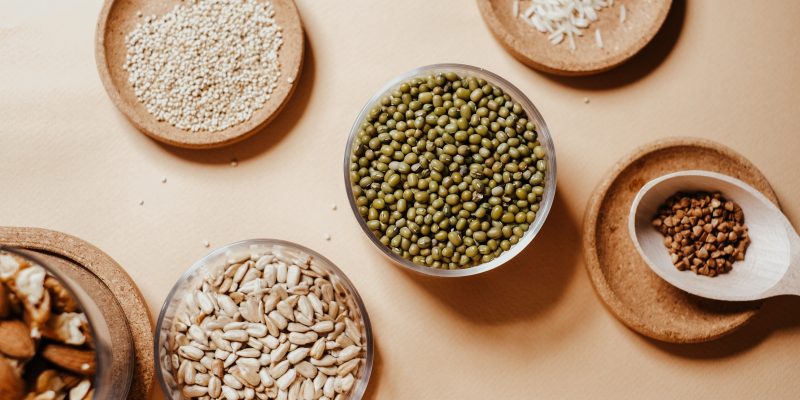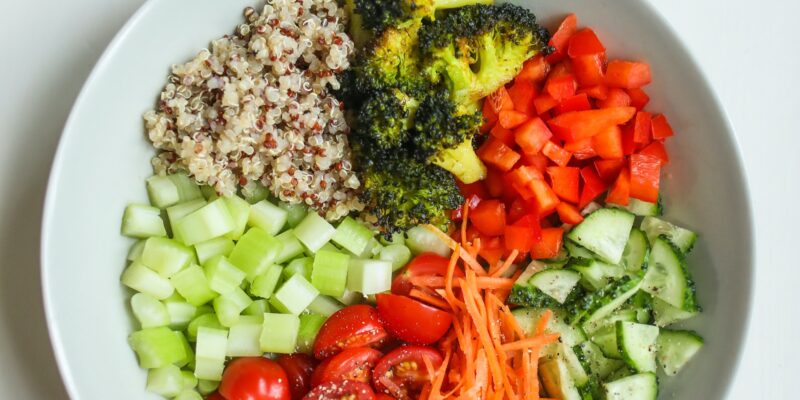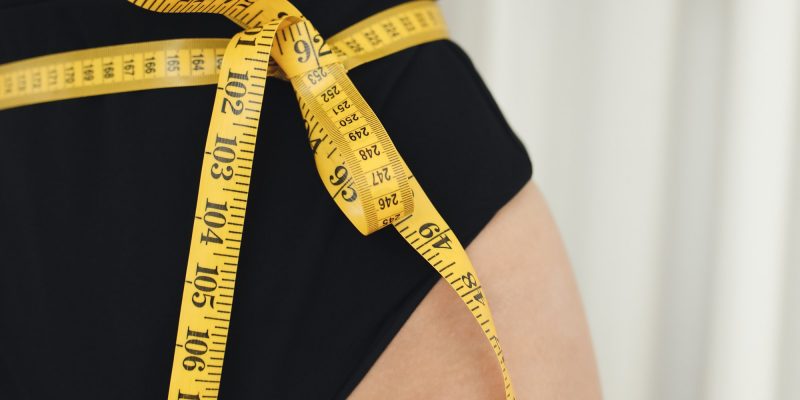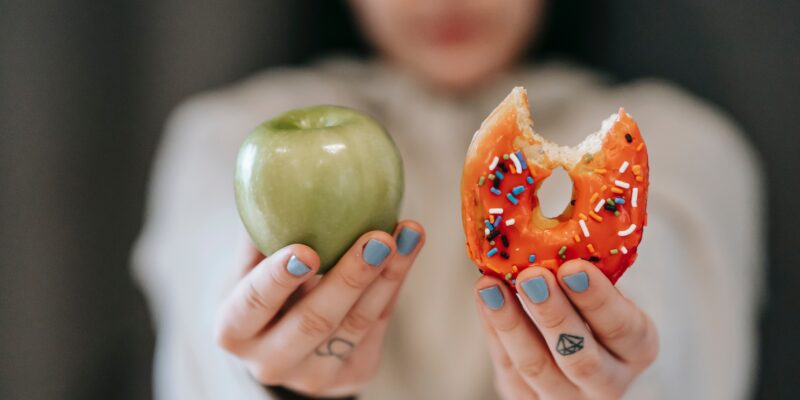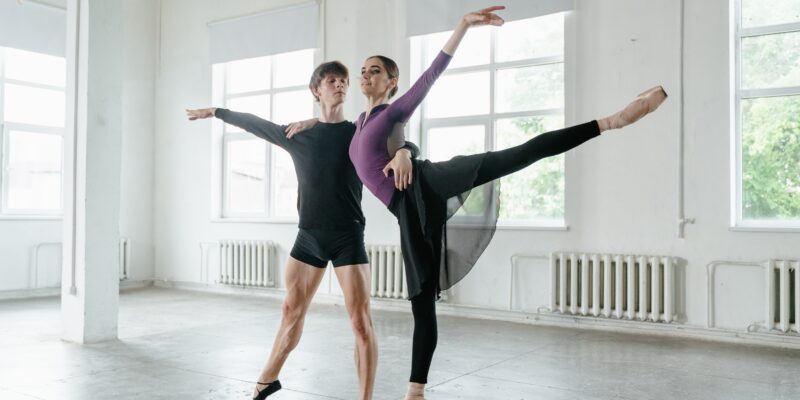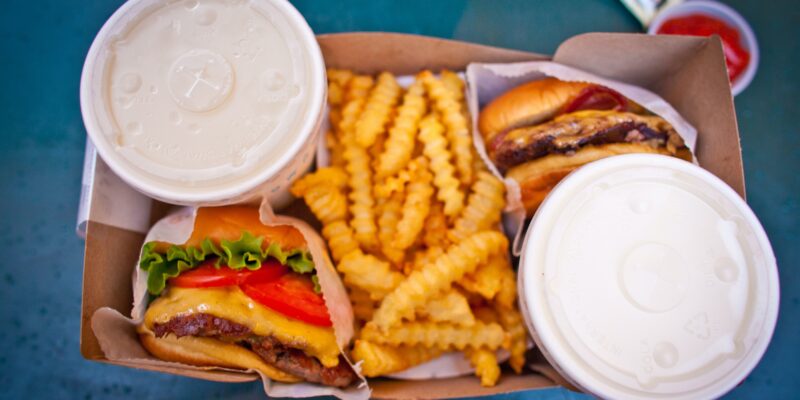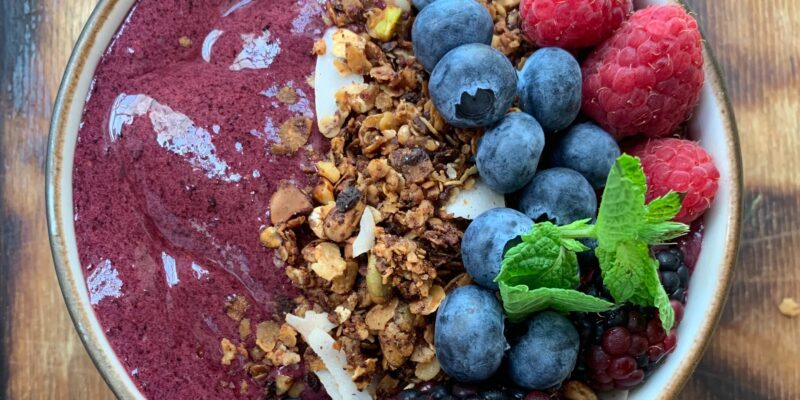Mindless eating is often scrutinized as a behavior that needs to be intervened upon to avoid “over”-eating. But mindless eating can provide us with good feedback— a sign that our bodies are needing something to move through distress. This article will discuss the most common reasons why dancers might mindlessly eat, and offer actionable steps to navigate the experience.
Read More...A Dancer’s Complete Guide to Protein
The benefits of protein are vast: protein is essential for rebuilding and repairing muscle tissue, which undergoes a natural level of wear and tears from intense activity (like dancing). Because dancers are more vulnerable to perfectionism and disordered eating, I don’t encourage them to calculate nor track daily protein intake. If concerns exist, such as a dancer feeling worried that they are eating too little (or too much) protein, then it’s recommended they consult with a licensed Registered Dietitian Nutritionist.
Read More...Performance Recovery Nutrition for Dancers
Generalized recovery to support your day-to-day dancing. Similar to how pre-performance meal planning supports your energy, prioritizing post-performance recovery plays a major role in the longevity of your dancing. In fact, chronic fatigue, excessive soreness, and the inability to focus can all be linked to subpar recovery efforts.
Read More...Food Anxiety and How to conquer it
Dancers might experience food anxiety for a number of reasons. Many (but not all) relate to past experiences with food deprivation. Food anxiety can feel like a major obstacle that limits your ability to heal your relationship with food. This article will discuss the most common reasons why dancers feel anxious and how to overcome it.
Read More...A Registered Dietitian Nutritionist for Dancers- here’s what you’ll gain
Dietitians are trained to work with dancers at the individual and institutional levels. Dietitians can support dancers’ performance potential and help them rebuild their relationships with food. Registered Dietitian Nutritionists (RDNs) can support dancers in a variety of ways, this article will explain how.
Read More...Anti-Inflammatory Diets- Will dancers benefit?
Anti-inflammatory diets are appetizing for dancers, especially given speculations surrounding intense athletic performance and inflammation. But is an anti-inflammatory diet a dancer’s key to both health and career longevity? This article will cover everything you need to know. What is inflammation? Inflammation is the body’s response to physical trauma or stress (not psychological stress). We […]
Read More...Help! I cannot eat when I’m stressed- emotional restrictive eating
How can dancers navigate a loss of appetite when experiencing emotional distress? Eating too few meals and snacks throughout your day also makes it harder to navigate emotional distress. A loss of appetite during times of emotional distress shouldn’t be ignored. In fact, dancers should proactively intervene— here are 5 actionable steps to do just that.
Read More...How To Stop Feeling Guilty After Eating- Overcoming Food Guilt
There was a time in my life when I avoided dessert because I believed, “the guilt just wasn’t worth the bite.” My food guilt was so severe that thoughts about eating the bag of M&Ms consumed me for DAYS after eating them. And while this mental parade of guilt was exhausting, it always made its way into my brain, especially after another bout of “failed willpower” from an otherwise “clean” diet. But in my pursuit away from restrictive eating behaviors I overcame this food guilt, and today, I’m going to teach you how to do the same.
Read More...Dancers & Disordered Eating
Has your interest in healthy eating become more of an obsession? Dancers are at risk to perfectionism, which can drive rates of disordered eating and eating disorders. Orthorexia describes the unhealthy obsession with healthy eating. Learn more about orthorexia and disordered eating among dancers.
Read More...What you might be getting wrong about Intuitive Eating
There’s a major misconception about Intuitive eating and it is one of the reasons why dancers hesitate to shift to the non-diet approach. At a glance, intuitive eating seems like a plan that involves eating what you want, when you want — without a thought or care. This depiction is not only oversimplified, but it […]
Read More...Is Meal Timing Really Important for Dancers?
A common challenge for dancers who are just beginning their work with me is unraveling the topic of meal timing. For most dancers, a flexible meal and snack routine is the backbone that supports adequate nourishment. But even with flexibility, meal and snack guidance remains vulnerable to the same perfectionistic qualities that drive disordered eating. […]
Read More...How to Challenge The Food Police
The food police is a compilation of thoughts and messages that not only drive our food choices but also, judge them. As a dietitian, I’ve had my fair share of skeptical dancers and dance parents assume that I might police their mealtime choices. But this couldn’t be any further from the truth!
Read More...Am I On A Diet? The Four Eating Personalities
In their book, Intuitive Eating: A Revolutionary Program that Works, authors and registered dietitians, Evelyn Tribole and Elyse Resch, categorize four separate eating styles to distinguish between various eating behaviors. To dismantle diet culture, it can be very helpful to identify the type of eating (or dieting) personality that you feel is most relatable. This will increase your awareness of behaviors around eating and subsequently, dieting.
Read More...Dancers, Fear of Weight Gain isn’t helping
During a layoff or time spent not dancing, it is possible that you’ll gain weight. It’s also possible that you’ll lose weight and maybe even maintain your weight. If you’re coming from a place of extreme food restriction, it’s likely that you’ll experience weight gain upon healing your relationship with food. Coming to terms with a few truths is often part of the puzzle. Here are 10+ truths about dancer weight gain.
Read More...Dancers and discipline: a recipe for success or for disordered eating?
As a former dancer turned Registered Dietitian Nutritionist, I can attest to a few common traits that, for most dancers at some point in their training and careers, feel relatable. Self-discipline is one and preliminary research even suggests that a relationship exists between one’s degree of self-discipline and some forms of physical activity. For much […]
Read More...‘What I Eat In A Day’ As A Dancer and Nutritionist
I bet I caught your attention. With over 15 billion views (and counting) on the hashtag, “What I Eat In A Day” vlogs are everywhere and dancers need to understand their impact. Oftentimes the intent is harmless. ‘What I Eat In A Day” vlogs are short-form videos that display everything a dancer eats throughout their […]
Read More...What are “fun” foods and can dancers eat them?
Restrictive dieting behaviors, whether obvious (like calorie counting) or subtle (like “clean” eating) strip the fun from food― turning eating experiences into math equations riddled with angst and guilt. As discussed in this article, however, even “fun foods” that are technically considered to be less nutrient-dense can (and should) be included in your dance fueling […]
Read More...Holistic Nutrition for Dancers
[UPDATED] A holistic approach to nutrition is not prescriptive but rather, guided. Dancers utilize self-discovery to inform their decisions around food and movement. Ultimately, this supports a dancer’s whole being, including their physical, mental, and emotional wellbeing.
Read More...Overcoming The Orthorexic Identity
What is The Orthorexic Identity? Dancers who experience a history of disordered eating, including orthorexia, commonly face the struggle of overcoming the orthorexic identity. Perhaps family members have labeled you as “the healthy one”. Or friends consider you the “good dancer” for eating “right” and keeping up with your demanding cross-training schedule. For dancers who […]
Read More...Superfoods For Dancers
Superfoods are a buzzy topic in the New Year. But what actually deems a food to be a “superfood?” The Healthy Dancer® Functional Fuel technique identifies options to to refuel, rebuild and recover.
Read More...
